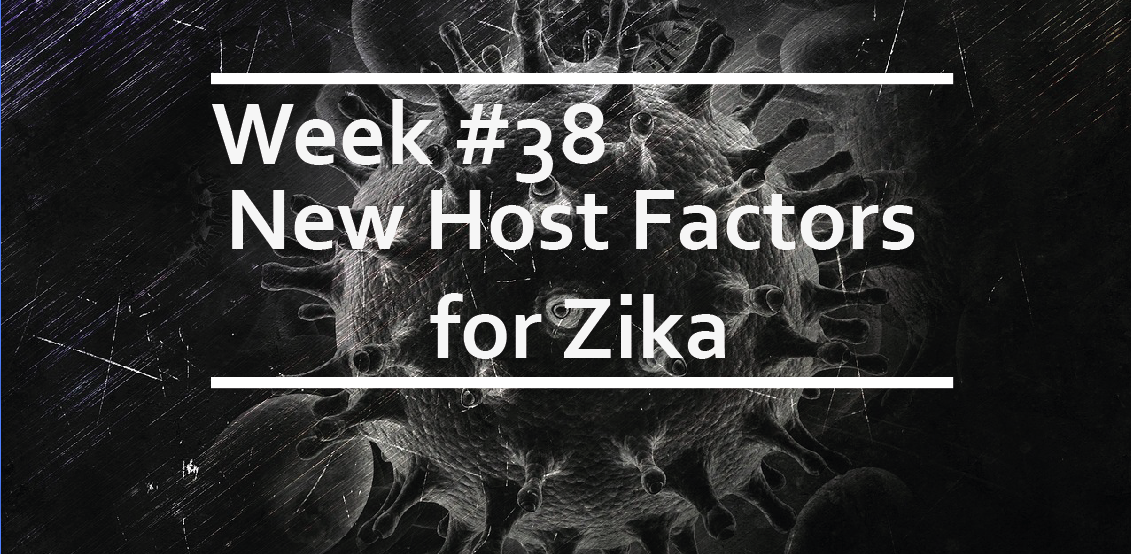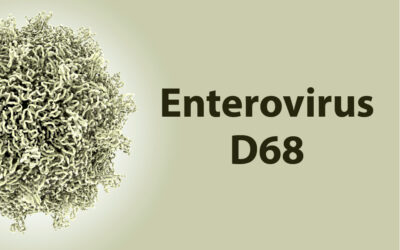New Host Factors for Zika
Little is known about the molecular mechanisms responsible for Zika virus (ZIKV) pathogenesis. Learning about cellular responses to viral infection and the mechanisms of host restriction and immune evasion is fundamental for the development of vaccine and therapeutics. In the effort to comprehensively understand how ZIKV affects neuronal cells, Scaturro et al. used an integrated proteomics approach to identify the multiple molecular interactions between ZIKV proteins and its human host’s proteins – known as an interactome.
The ZIKV-host interactome
The authors introduced each of ZIKV proteins into cultured neuroblastoma cells (SK-N_BE2) by lentivirus transduction. Because each of these proteins carried an HA affinity tag, the authors were able to lyse the cells and progress to affinity purification coupled with liquid chromatography and tandem mass spectrometry (AP-LC-MS/MS), thus allowing the isolation and the identification of 386 human proteins interacting with ZIKV proteins.
Neurological disease and development proteins among the interactome
As well as proteins previously shown to have bona fide interactions with flavivirus proteins, the interactome also included novel ZIKV binding partners, including proteins and pathways linked to neurological disease and development. This is noteworthy because of ZIKV association with severe neurological abnormalities and microcephaly in newborns. Such proteins include the capsid interacting proteins LARP7, LYAR, and the neuronal development factor NGDN. LARD7 is involved in telomere stability and is mutated in Alazami syndrome (a form of primordial dwarfism) and LYAR is important for maintenance of embryonic stem cell identity.
In particular, ZIKV non-structural (NS) protein 4B, which has previously been suggested to inhibit neurogenesis, showed specific enrichment in proteins associated with neurodegenerative disorders, retinal degeneration, neuronal differentiation, and axonal dysfunction.
A global proteomics analysis in ZIKV-infected hNPCs
Because ZIKV predominantly infects neuronal progenitor cells (NPCs) during the early stages of development, the authors next performed a proteomics analysis addressing the differentiation of human NPCs (hNPCs) during ZIKV infection. Using global proteomics analysis the authors were able to identify proteins significantly up- or down-regulated by ZIKV during differentiation of NPCs into neurons. When the hNPCs were cultured under differentiation conditions, the authors found that ZIKV infection led to a robust upregulation of type-I interferon-stimulated genes alongside a specific downregulation of neuronal differentiation factors.
How is the phosphoproteome affected by ZIKV infection?
Not only absolute protein levels are affected by viral infections. Post-translational modifications also play important roles in viral infections. Therefore, Scaturro et al. also used a phosphoproteomics approach to investigate the response of cultured neuronal cells to ZIKV infection. This allowed the authors to identify those mechanisms potentially contributing to the observed upregulation in autophagy, decreased hNPC proliferation, and impaired neurogenesis associated with ZIKV infection.
Newly identified Zika host factors
Based on their interactome, proteomics, and phosphoproteomics findings, the authors went on to investigate a number of the newly identified Zika host factors. Using gene silencing, they identified 14 novel host proteins required for ZIKV replication. These include proteins that, upon ZIKV infection, decrease in abundance (e.g., DOK3, XIRP2, YIPF4, and LMOD3), change phosphorylation status (e.g., LMO7, FXR1, and LARP7), or interact with the ZIKV-encoded proteins (e.g., LARP7, LYAR, BSG, and CLN6).
ZIKV attacks on multiple fronts
Taken together, this unbiased and data-rich approach shows that ZIKV has evolved multiple mechanisms to affect key cellular processes, which may account for the broad range of abnormalities associated with infection. This comprehensive interactomic work is essential for guiding more focused studies aiming at a deeper understanding of the molecular bases of infection and, ultimately, at the development of strategies to fight viral diseases. However, it is worth remembering that a virus is always more than the sum of its parts, and over-expression of individual proteins remains an artificial system that needs validation in the context of viral infection. While knock-down studies constitute a significant step in this direction, going from –omic approaches to understanding the impact of signalling pathways in pathogenesis remains challenging and difficult to interpret without oversimplifying. This study reveals a wealth of precious information, to interpret as an important starting point for understanding this unexpectedly challenging and problematic virus.




